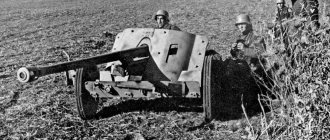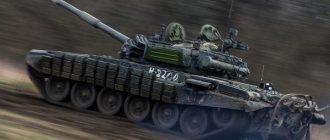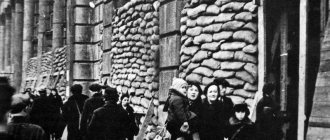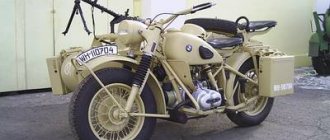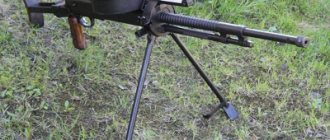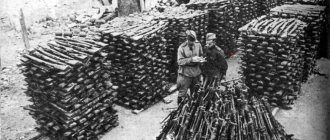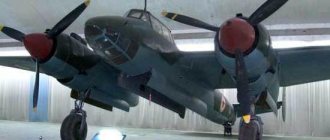Jumping springmina, frog S-Mine 35.
S-mine
or simply
frog mine
the fuller name “
Spring mine
”, which means jumping) is a jumping German anti-personnel anti-personnel mine with circular fragmentation damage during the Great Patriotic War and the Second World War, which was in service with the Wehrmacht and troops. This ammunition was created by German designers in the early 30s, but not out of nowhere, but on the basis of a war-tested German jumping mine known as the Schrapnell-Mine from the WWII period, which was initially wire-controlled and driven by a conventional electric discharge with special remote control.
When the fuse is detonated, a beam of dense directed fire ignites the powder retarder, which, moving along the central ignition tube, activates the expelling charge, consisting of a special checker made in the form of a narrow disk consisting of black powder. The latter, by the force of energy obtained in a confined space, throws the combat structure of the mine to a height of 0.5-1.5 m. At the same time, rapid combustion of special powder retardant columns occurs, which are available in three special remote igniters. After any one burns down to the detonator cap, the latter is instantly triggered, initiating the detonation of the high explosive charge of the mine. The damaging factor is ensured by the presence in the body of this terrible ammunition of about 400 ready-made destructive elements (abbreviated as GPE), made in the form of a spherical shape with a diameter ranging from 8...9 mm, the mass of which usually does not exceed 3 g.
Flying out of the knockout glass at the previously indicated height, there is a horizontal scattering of fragments with sufficient lethal force, which have sufficient lethal force and a flight speed of up to 1000 m/s. According to information from German technical documentation, the lethal radius of an open manpower mine was 20 m, while the effective radius of destruction of personnel by fragments was 100 m. It is not clear why, in the instructions of the US Army of that time a slightly different radius of destruction was indicated, amounting to 140 m. Why This one is so unclear.
The device of a jumping frog mine S-Mine 35 with a fuse S.Mi.Z.35
1. tendrils of a pressure-triggered fuse 2. safety pin 3. external spring 4. firing pin spring 5. firing pin 6. internal igniter primer (KV) 7. threaded seal of the powder moderator channel 8. combat elements 9. channels of remote fuses 10. primer -detonator (CD) 11.moderator columns made of pressed gunpowder (operation in approx. 0.5 s) of the bursting charge 12.moderator column (works in approximately 4.5 s) of the expelling charge 13.the expulsion charge itself 14.hole plug for filling the mine with an explosive 15. mine body seal 16. explosive high explosive charge of about 280 grams of trinitrotoluene (TNT, TNT)
The use of springmina in WWII
During the fighting on the Western Front and the Allied advance in Europe, the German S-mine received a new, slightly romantic name for American infantrymen - “Bouncing Betty”, which had a great moral impact on Allied soldiers. On the Eastern Front, the Red Army soldiers gave her the nickname “frog mine”, or changed the pronunciation “springmin” into the German style. The quantity of ammunition of this type at the end of the Second World War amounted to more than 1.93 million units. Based on the design principle of SMi mines, similar explosive devices were developed somewhat earlier in France (Mine Bondissante Mle-1939), England (Shrapnel Mine MK1/MK2), the United States (M2, M16) and some other highly developed countries. in search practice, finds of these explosive objects are common. You might stumble across a mining strip and discover some deadly surprises. If you suddenly find such things, there is no need to try to disassemble or deactivate them. A spring mine, like any other ammunition, is fraught with mortal danger and the easiest way to avoid getting into trouble is to simply pass by them or, if you wish, to report the find to the Ministry of Emergency Situations.
Around 1943 a special design of this mine began to appear, which, according to the attached instructions, was intended as close-range self-defense ammunition for the crew of heavy Tiger
. The mine was attached in a special way to a special mortar mounted in the top sheet of the tower and was detonated using a conventional electric detonator from the power supply system. .
How it all began
More than 500 years ago, the first mines appeared and they looked like gunpowder charges that soldiers placed under the enemy’s stone fortifications.
Sappers of those times dug tunnels and were responsible for trench systems and the durability of defensive structures. It got to the point that if, during defensive actions, one or another structure did not withstand the enemy’s onslaught, the sapper was considered guilty, and his head flew from his shoulders.
The Englishman Bickford significantly expanded the capabilities of demolition masters by inventing the fire cord at the end of the 19th century.
The first land mines began to be used during the American Civil War (1861-1865) and Russian-Turkish battles (1877-1878)
Man discovered TNT and dynamite, and successfully began to use them in subversive operations at the turn of the 19th and 20th centuries.
At the beginning of the twentieth century, mine production became widespread. During the Russian-Japanese clashes of 1904-05, this weapon was already produced in a factory.
With the appearance of tanks on the battlefield, the filling of the mine becomes noticeably heavier and now this type of charge is used not only against infantry, but also against armored tracked vehicles. After the end of the Great Patriotic War, the commanders of leading countries came to a common opinion on the need to gradually reduce the number of anti-personnel ammunition of this type.
ROLLING BOMBS
Rolling bombs - Rollbomben - are usually classified as hand grenades, although they were large in size. The smallest model weighed 1 kg, of which 700 g was explosive. Large models had explosive weights of 3.0 and 3.5 kg. But the real monster in this family was Rollbombe 30 kg. It was a large ball with a diameter of 30 cm and a weight of 30 kg, made of reinforced concrete. It included 4 kg of small metal parts and 5.5 kg of explosives. According to eyewitnesses, the explosion of this ammunition made an indelible impression. However, the Rollbomben never moved beyond the category of "weird weapons" and were produced in very modest quantities. No cases of use noted.
Operating principle
The bouncing anti-personnel mine is the most inhumane means of warfare. It is designed as a projectile, similar to a tin can with a deadly “filling” inside. The body is lined with two layers of balls, like bearings - with shrapnel. A charge is also placed in the “can,” which scatters shrapnel to the side. The weapon is installed in areas overgrown with grass or bushes for camouflage. This mine is triggered by snow or falling branches.
The Soviet mine acquired the name “frog” or “frog” in Afghanistan - cassettes at that time were dropped from helicopters. The green color of the can is not noticeable in the grass; under the soldier’s feet a sound is heard, like a frog being crushed. What happens next is scary to imagine.
The principle of operation of the device is based on the jumping of a projectile with an explosive filling to a height of up to 1.5 m and its subsequent detonation. The circular kill model is an effective and lethal system.
The enemy soldier is hit by its fragments when the mine is triggered. A person, touching the trip wire with his foot, activates the fuse pin. The detonator is triggered and the weapon explodes, scattering 240 balls of shrapnel or fragments of a cast-iron body at a distance of 25 meters (typical for OZM-72).
Demining of the system is carried out only during remote mining. The fuse is sensitive, so sappers do not have a second chance. As a rule, they act like a cat.
Jumping anti-personnel mine operating principle
Interesting! The second name of the frog is “Witch”.
Combat use
One of the first “baptisms of fire” of the Sprengmine 35 frog mine occurred in the midst of fierce fighting between the French and Germans during World War II. Then, on September 13, 1940, the Germans had to retreat and take up defense in the Palatinate Forest area. The French command decided to send numerous reconnaissance groups to find out the location of the enemy's defensive positions.
Under the cover of darkness, the scouts set out to carry out a combat mission. But almost none of them made it back alive, and the few soldiers who were lucky enough to survive spoke confusedly of “ambushes out of nowhere” and “aimed fire from German guns.” In fact, the French ran into well-placed Sprengmine 35. Frog mines, exploding at a height of one and a half meters, destroyed almost the entire personnel of the reconnaissance group.
Invented during the First World War, the S-mine laid the foundation for the discovery of new deadly projectiles - frog mines.
New samples of frogs are very difficult to detect, because if a sapper uses a mine detector, he will certainly hit the trip wires connected to the fuse. And when using a probe, there is a risk of explosion. And with skillful camouflage, a frog mine can become an insurmountable obstacle for enemy infantry.
Types of anti-personnel mines
The most famous domestic mine is the pressure anti-personnel mine, or PMN for short. Few would have thought that this type of engineering weapon would become one of the most powerful high-explosive mines in the world when it was adopted by the USSR in 1950. It can be cleared, but it would be more advisable to detonate it at the installation site by trawling or by throwing a sapper “cat”, because it is hypersensitive to pressure.
If an enemy soldier steps on the pressure surface of a mine cover, then within a second he will need urgent hospitalization. The soldiers dubbed the mine the “black widow” because of the black surface of the rubberized cover.
The power of the mine was enough for the person who stepped on the PMN to have his foot torn off at the cut of his boot in almost 100% of cases.
During the war in Afghanistan, Soviet special forces laced their sneakers or combat boots very tightly when they knew that when carrying out a mission there would be an area mined with such mines. In exceptional cases, this could save the damaged limb from amputation.
Almost two decades later, at the end of the 60s, the PMN-2 mine was developed, similar in principle to the PMN. This mine was also guaranteed to incapacitate the enemy by tearing off a limb. Only, unlike the “black widow,” she also caused serious damage to the other leg. Although the mass of explosive in the filling of the mine was half that of the PMN.
There are frequent cases when an enemy soldier who stepped on PMN-2 lost both feet at once. The shock wave of the mine is so strong that in some cases the victims lost consciousness. In addition, enemy soldiers died from pain shock and heavy blood loss long before the arrival of field orderlies.
After 10 years, there is a need to install a self-destruct timer on new generation mines. This happened due to the fact that many offensive operations under limited time conditions failed when the troops encountered their own minefields that had not been dismantled.
In the 70s, the PMN-3 was put into service, and an electronic sensor was installed in it, which made it possible to automatically detonate the mine after a certain period of time.
It was also very difficult to clear the mine, because during enemy counter-sapper actions it immediately went off if the angle of inclination was exceeded by more than 90 degrees.
Performance characteristics of PMN mines
| Characteristic | PMN | PMN2 | PMN3 |
| Weight, kg | 0.55 | 0.4 | 0.6 |
| Explosive | TNT | A mixture of hexogen and TNT | TNT with hexogen |
| Explosive mass, kg | 0.2 | 0.1 | 0.08 |
| Pressure plate radius, mm | 55 | 60 | 61 |
| Pressure sensitivity, kg | 8-25 | 15-25 | 5-25 |
| Height, mm | 50 | 54 | 54 |
| Self-liquidator time range | — | — | 12 hours, 1, 2, 4 or 8 days. |
If the detonation of a high-explosive mine is aimed at disabling one enemy infantry combat unit, then the principle of operation of fragmentation ammunition is based on the defeat of several soldiers. When the guy wires of the POMZ-2 circular mine are touched, the fuse pin is pulled out and the projectile detonates.
The bodies of such mines are made so that when they explode, their components are also parts of the destructive elements.
Performance characteristics of POMZ-2
| Weight, kg | 1.6 |
| Explosive | TNT |
| Explosive mass, kg | 0,075 |
| Radius of cast iron body, mm | 30 |
| Tension sensitivity, kg | 1-2 |
| Height, mm | 130 |
| Length of guy wires, m | 4 |
Directional mine MON-50. Its detonation occurs after the sapper gives a command to the control panel.
It is also equipped with a mechanical trigger sensor in the form of a tension wire. It is one of the most powerful anti-personnel mines and the only one that causes significant damage not only to infantry, but also to enemy light equipment.
Performance characteristics of MON-50
| Weight, kg | 2 |
| Explosive | PVV-5A |
| Explosive mass, kg | 0.7 |
| Damaging elements, pcs. | 550 metal balls |
| Destructive range, m | 30 |
| Height, mm | 160 |
| Length, mm | 220 |
| Width, mm | 60 |
Performance characteristics
In Russia, the OZM-72 model was adopted for service in 1973. It was used during the Afghan campaign, and Uzbekistan has been placing “frogs” on the border with Tajikistan since 2000. As of 2016, the Russian weapons arsenal included a large number of anti-personnel mines with the following characteristics:
| Type | Fragmentation barrage or anti-personnel circular destruction |
| Housing material | Steel |
| Weight | 5 kg |
| Explosive type | TNT |
| Explosive Component Weight | 660 g |
| Defeat | 2400 steel balls/rollers |
| Case height | 17.2 cm |
| Case diameter | 10.8 cm |
| Sensitivity | From 1 to 17 kg |
| Radius of action | 25 m |
| Fuse type | MUV-3, MUV-4, MUV-2 - without fuse |
| MVE-72, MVE-NS - with fuse | |
| Fuse type | Capsule with detonator |
| Target sensor | Break/tension |
On a note! The target sensor is selected according to the type of fuse.
An excerpt characterizing the Bouncing Mine
“Yes, yes,” said the governor’s wife, as if speaking to herself. - But here’s what else, mon cher, entre autres. Vous etes trop assidu aupres de l'autre, la blonde. [My friend. You look after that blond girl too much.] The husband is pathetic, really... “Oh no, we are friends,” Nikolai said in the simplicity of his soul: it never occurred to him that such a fun pastime for him could be for him. no one is having fun. “What a stupid thing I said, however, to the governor’s wife! – Nikolai suddenly remembered during dinner. “She’ll definitely start wooing, and Sonya?..” And, saying goodbye to the governor’s wife, when she, smiling, told him once again: “Well, remember,” he took her aside: “But here’s the truth.” tell you, ma tante... - What, what, my friend; Let's go sit here. Nikolai suddenly felt the desire and need to tell all his innermost thoughts (those that he would not have told his mother, sister, friend) to this almost stranger. Nikolai later, when he recalled this impulse of unprovoked, inexplicable frankness, which, however, had very important consequences for him, it seemed (as it always seems to people) that he had found a stupid verse; and yet this outburst of frankness, together with other minor events, had enormous consequences for him and for the whole family. - That's it, ma tante. Maman has long wanted to marry me to a rich woman, but the thought alone disgusts me, marrying for money. “Oh yes, I understand,” said the governor’s wife. – But Princess Bolkonskaya, that’s another matter; first of all, I’ll tell you the truth, I really like her, she’s after my heart, and then, after I met her in this position, it’s so strange, it often occurred to me that this was fate. Think especially: maman has been thinking about this for a long time, but I had never met her before, as it all happened: we didn’t meet. And at a time when Natasha was her brother’s fiancée, because then I would not have been able to think about marrying her. It’s necessary that I met her exactly when Natasha’s wedding was upset, and then that’s it... Yes, that’s what. I haven't told this to anyone and I won't tell it. And only to you.
MODIFICATIONS BASED ON ANTI-TANK MINE
From the data that has survived to this day, a modification of concrete mines based on the Tellermine 35 Stahl (T.Mi.35 St.) anti-tank mine is also known. These mines were widely used by German troops not only as anti-tank mines, but also as demolition charges. Simultaneously with the development of concrete mines for rolling onto the heads of the landing forces, developments were carried out using the stocks of anti-tank mines available in warehouses for the same purposes. Initially, there were even attempts to place such a mine in a welded spherical body made of a metal rod.
However, this option had a number of disadvantages: firstly, the openwork structure clung to vegetation, secondly, it had a lot of unused space, in addition, the welded frame required the precise work of qualified welders. But German designers found a simpler solution to this problem. The mine body was made of two halves with a wooden sector frame filled with concrete and crushed stone, then the entire structure was fastened with barbed wire and coated with cementing mortar again. At the same time, one of the sectors remained unfilled with cement mortar to maintain access to the ignition hole in the bottom of the mine and installation of a grating fuse with a fire cord. The mass of the entire structure was 25–30 kg, which ensured reliable rolling down the slope and a large additional mass of damaging elements.
For the use of ball mines, special positions were previously prepared, which were grooves leading from the slope down to the beaches.
German troops training in the area of the future Omaha Beach bridgehead, spring 1944.
